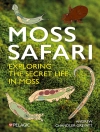This book discusses the cross-talk between plants and microbes in the rhizosphere. The rhizosphere is the hotspot of microbial activities that influence plant growth and crop yield. The rhizosphere-residing microbes include the nitrogen-fixing rhizobia, mycorrhizal fungi, antibiotic-producing bacteria, antagonistic, plant-beneficial fungi, and entomopathogens. The three-way cross-talk among the plants, the pathogens and other microbes involves signaling molecules, metabolites, and physical interactions. The book also describes deleterious and beneficial aspects of this communication between plants and microbes. Plants program the local microbiome near their roots, and the microbial community has a profound influence on the functioning of the plant. This complex communication makes the collection of chapters a timely one, because the diverse subjects are linked by their focus on the molecular language of plant-microbe cross-talk.
This timely and informative book is useful for students and researchers in the fields of microbiology, soil biology, and plant pathology.
สารบัญ
Chapter 1 – Plant-microbe crosstalk in the rhizosphere: Introductory remarks.- Chapter 2 – How plants modulate their rhizosphere microbiome.- Chapter 3 – Strigolactone signalling and plant-microbe communications.- Chapter 4 – The role of phytohormones in cross-communication between plants and rhizo-microbes.- Chapter 5: Quorum sensing in the rhizosphere.- Chapter 6 – Metabolomics approaches for studying the Trichoderma-plant interactions.- Chapter 7 – Cross-talk between wilt-causing fungi, plants and their microbiome.- Chapter 8 – Biocontrol from the rhizosphere: probiotic pseudomonads.- Chapter 9 – Plant microbiome modulation through seed coating: A novel approach for a smart and efficient microbial delivery.- Chapter 10 – Trichoderma rhizosphere competence, suppression of diseases and biotic associations.- Chapter 11 – Ectomycorrhizal symbiosis: from genomics to trans-kingdom molecular communication and signaling.- Chapter 12 – Fungal effector proteins: Molecular mediators of fungal symbionts of plants.
เกี่ยวกับผู้แต่ง
Prof. Benjamin A. Horwitz did his Ph D studies in fungal genetics at the Weizmann Institute of Science, Israel, on blue light photoreception in the soil fungus Trichoderma. He has been a member of the Faculty of Biology at the Technion – Israel Institute of Technology since 1987, leading a lab studying the molecular genetics of fungal-plant interactions. He has contributed to fungal genome projects, annotating genes for the pathways that fungal cells use to process signals. The Horwitz lab has learned how conserved eukaryotic signaling pathways of fungi contribute to gene expression, development, stress responses, beneficial interactions with plants, and plant disease, communicated in research papers over the years. Prof. Horwitz has edited two books, on Trichoderma and Soil Biology, and served on the editorial boards of Microbiology, Eukaryotic Cell and Phytoparasitica.
Prof. Prasun K. Mukherjee heads the Environmental Microbiology Section of Nuclear Agriculture and Biotechnology Division, Bhabha Atomic Research Centre, Mumbai, India. He has been active in research on biological control of plant diseases using the antagonistic fungi
Trichoderma species. He has published several research papers and reviews in high standard journals like Genome Biology, AEM, JBC, Nature Rev Microbiology, Annual Rev Phytopathology, Environmental Microbiology, Fungal Biology Reviews, etc. and his papers are very well-cited. He is an elected fellow of two national Science Academies and is a recipient of several International and National awards, like Fulbright Scholarship, Homi Bhabha Science and Technology Award, VASVIK Award etc. He has been a visiting scientist at the Texas A& M University and The Technion- Israel Institute of Technology on several occasions. He is currently an Editor for Fungal Genetics and Biology, 3Biotech and Heliyon.












